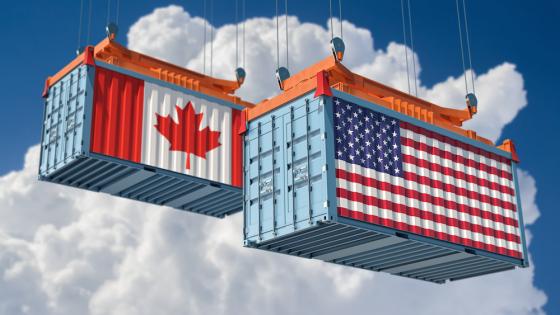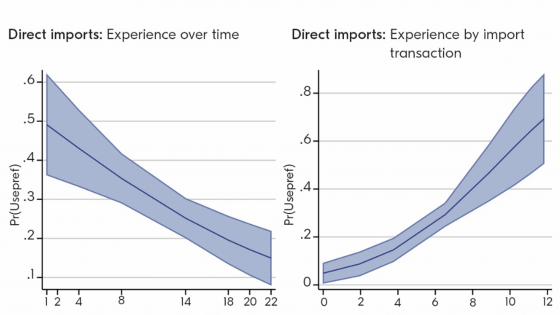Richard Baldwin’s columns of May 16 and 17 (Baldwin 2011 a, b) err badly both in characterising US policy toward Doha and in criticising the alternative trade policy strategies available to the US.
His premise is that reductions in tariffs in partner countries are the main goal of US trade policy. As he acknowledges in the first sentence of his second column, however, “21st century trade agreements are not about tariff preferences, they are about making it easier to do business internationally”. The current Doha package fails to do so and has therefore generated virtually no interest in the US. Its failure to come up with any meaningful offers on services, where the US has major competitive strength and other countries retain substantial barriers, is the clearest example of this Doha shortcoming. He then argues that the US is prepared to let Doha fail primarily because of its interest in maintaining its “tariff leverage”, retaining the ability to eliminate its remaining (very small) duties in return for greater reciprocity at some point in the future. But this argument has hardly been mentioned in the Doha debate in Washington. It certainly does not dominate US policy.
The reason for US disinterest is very simple. As my colleagues Gary C Hufbauer and Jeffrey J Schott have documented so clearly (Hufbauer and Schott 2010), the formula cuts of farm subsidies and tariffs and industrial tariffs currently on the table in the Doha Round would expand total US exports by a munificent $6-$7 billion. The number is so embarrassingly small that no US industry or firm has lobbied the administration or Congress on the round during the entirety of the Obama administration (or for some time before). US business has voiced more interest in the FTA with tiny Panama, not to mention the much bigger FTAs with Colombia and especially Korea. Dr Baldwin is simply incorrect to assert that “the Doha tariff cuts would be the biggest market opening initiative ever signed by the US”; Hufbauer-Schott show that what has been agreed so far would entail US trade gains considerably smaller than NAFTA and the Korea FTA.
In his prescriptive second column (Baldwin 2011b), Baldwin argues that the US has no alternative strategy to increase its global market access because domestic political constraints will hamper its pursuit of regional and bilateral FTAs. He acknowledges that the Trans Pacific Partnership (TPP) is the “strong point” in this alternative approach but ignores the likely near-term expansion of its coverage to at least Japan and Korea and the resultant pressure this will put on the rest of Asia, including China, that could enable TPP to realise its ultimate goal of becoming a Free Trade Area of the Asia Pacific by 2020.
In doubting the ability of the US to win the FTA race, or at least obviate the current discrimination against it by catching up with the intra-Asian and EU regional pacts already in place, he ignores the strong prospect that the US will trim its negotiating sails to enable it to do so. Even the strongest Congressional and other advocates for US agriculture and labour standards understand that the country must fight preferential fire with fire, and the geopolitical imperative that prompted President Obama to join the Trans Pacific Partnership negotiations in the first place militate very strongly against letting those talks fail. In short, TPP (and an eventual Free Trade Area of the Asia Pacific) have very strong domestic constituencies in the US whereas Doha has very few.
The fixation in Baldwin (2011 b) on the multilateral option also clouds his judgment on the timing of US trade initiatives. There is no reason to believe that it will be harder for the administration to make deals in 2013 (or even 2012) than now, and it should in fact be considerably easier if unemployment declines substantially by then and the more competitive dollar produces a substantial reduction in the US trade deficit. Contrary to the assumption in Baldwin (2011), China and other emerging markets might also be more willing to compromise in a year or two as they gain confidence in the global recovery (and hence their own) and increasingly recognise their national interests in assuming responsible leadership of the global trading system commensurate with their increasingly central roles in it. It must also be noted that some of the emerging markets’ priority trade “asks” of the US, such as China’s desire for early market economy status and India’s wish to expand visa opportunities for its high-tech professionals, can be better pursued bilaterally than multilaterally.
I share Richard Baldwin’s fervent desire to revive the Doha Round and restore the multilateral track toward trade liberalisation. However, I reject his view that the US is the sole (or even primary) source of the pending failure. There is plenty of blame to go around and the abject failure of all the major trading countries to put meaningful offers on the table, or even to start serious negotiations on the crucial services sector, are at least equally at fault. My colleagues Hufbauer and Schott quantified the sizable potential gains from including services, several sectorals, and a robust facilitation agenda, but the continued absence of all three dooms Doha at this juncture and suggests that the running on trade liberalisation will take place far from Geneva for at least the foreseeable future.
References
Baldwin (2011a), “Is America mis-thinking its 21st century trade strategy? Part 1”, VoxEU.org, 16 May.
Baldwin (2011b), “Is America mis-thinking its 21st century trade strategy? Part 2”, VoxEU.org, 17 May.
Hufbauer, Gary, Jeffery Schott and Woan Foong Wong (2010). Figuring out the Doha Round, Policy Analyses in International Economics 91, PIIE.


